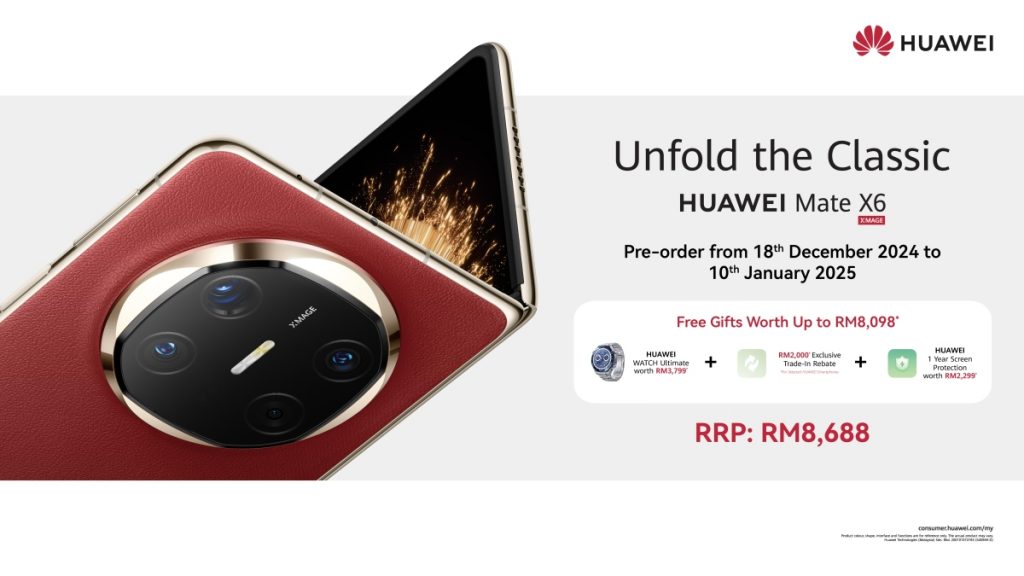There are not many high-end and yet compact smartphones out there these days, but there are some. In this article, we’ll compare two such devices, the Samsung Galaxy S24 vs Xiaomi 14. These are not technically the most powerful devices from their companies, but they’re smaller variants of those phones. The Galaxy S24 Ultra and Xiaomi 14 Ultra take the crown of being the most powerful ones, of course.
The Galaxy S24 and Xiaomi 14 are the devices to go to if you hate carrying around huge smartphones. The Galaxy S24 is the smaller one of the two, but both are somewhat compact. The Xiaomi 14 has a larger display, which is why it’s a bit larger. In any case, they are quite different, and in this article we’ll compare them across a number of categories, starting by listing their specifications.
Specs
Samsung Galaxy S24 vs Xiaomi 14, respectively
– Screen size:
6.2-inch Dynamic AMOLED 2X (flat, 120Hz, 2,600 nits max brightness)
6.36-inch LTPO OLED display (flat, adaptive 120Hz, 3,000 nits max brightness)
– Display resolution:
2340 x 1080
2670 x 1200
– SoC:
Qualcomm Snapdragon 8 Gen 3/Samsung Exynos 2400
Qualcomm Snapdragon 8 Gen 3
– RAM:
8GB (LPDDR5X)
12GB (LPDDR5X)
– Storage:
128GB (UFS 3.1)/256GB/512GB (UFS 4.0)
256GB/512GB (UFS 4.0)
– Rear cameras:
50MP (wide, f/1.8 aperture, OIS, Dual Pixel PDAF), 12MP (ultrawide, 120-degree FoV, f/2.2 aperture, 1.4um pixel size), 10MP (telephoto, f/2.4 aperture, OIS, PDAF, 3x optical zoom)
50MP (wide, f/1.6 aperture, 1.2um pixel size, OIS), 50MP (ultrawide, 115-degree FoV, f/2.2 aperture), 50MP (telephoto, f/2.0 aperture, 75mm lens, OIS, PDAF, 3.2x optical zoom)
– Front cameras:
12MP (wide, f/2.2 aperture, Dual Pixel PDAF, 22mm lens)
32MP (wide, f/2.0 aperture, 0.7um pixel size)
– Battery:
4,000mAh
4,610mAh
– Charging:
25W wired, 15W wireless, 4.5W reverse wireless (charger not included)
90W wired, 50W wireless, 10W reverse wireless (charger included)
– Dimensions:
147 x 70.6 x 7.6mm
152.8 x 71.5 x 8.3mm
– Weight:
167/168 grams
193 grams
– Connectivity:
5G, LTE, NFC, Wi-Fi, USB Type-C, Bluetooth 5.3/5.4
– Security:
In-display fingerprint scanner
In-display fingerprint scanner (optical) & facial scanning
– OS:
Android 14 with One UI 6.1
Android 14 with HyperOS
– Price:
$799.99+
€999
– Buy:
Galaxy S24 (Best Buy)
Xiaomi 14 (Amazon)
Samsung Galaxy S24 vs Xiaomi 14: Design
The Samsung Galaxy S24 and Xiaomi 14 are both made out of metal and glass. Well, the Xiaomi 14 also comes in a variant with a vegan leather backplate, but that model is exclusive to China. In this article, we’ll focus on global variants. The two phones are quite different in terms of design, even though they look somewhat similar when you look at them from the front. They both have flat displays, thin uniform bezels, and a centered display camera hole.
If you flip them around, however, you’ll see plenty of differences. The Galaxy S24 has three separate camera islands on the back. Those cameras are aligned vertically in the top-left corner of the phone’s back. The Xiaomi 14 also has three cameras, but they’re all included in a single camera island which sits in the top-left corner of its back. Their logos are in different spots in on the back too. All physical buttons sit on the right-hand side of both devices.
The Xiaomi 14 is taller, wider, and thicker than the Galaxy S24. Do note that it has a noticeably larger display too. The bezels around the display are thinner on the Xiaomi 14, but not by much. The Galaxy S24 weighs 167 grams, while the Xiaomi 14 weighs 193 grams. Both smartphones do offer an IP68 certification for water and dust resistance. Both of them are also very comfortable to hold and use, though they are quite slippery. Using a case with both may not be such a bad idea. They’re both very good for one-hand use, at least they were for us. The build quality is great on both sides.
Samsung Galaxy S24 vs Xiaomi 14: Display
The Samsung Galaxy S24 includes a 6.2-inch fullHD+ (2340 x 1080) Dynamic LTPO AMOLED 2X display. This panel is flat, and it has a 120Hz refresh rate (adaptive). It supports HDR10+ content, and it has the peak brightness of 2,600 nits. This display has a screen-to-body ratio of around 90%, and a display aspect ratio of 19.5:9. The Gorilla Glass Victus 2 from Corning is used to protect the display itself.

The Xiaomi 14, on the other hand, has a 6.36-inch 2670 x 1200 LTPO OLED display. This panel is flat too, and it has a 120Hz refresh rate (adaptive). It supports Dolby Vision and HDR10+ content too, and the maximum brightness is 3,000 nits, in theory. The screen-to-body ratio is around 90%, and the display aspect ratio Xiaomi opted for is 20:9. The Gorilla Glass Victus protects this panel.
Both of these phones have great displays. Both panels are quite responsive, vivid, and offer great viewing angles. They’re also quite sharp, even though the Xiaomi 14 has a higher resolution, in case you need it. The blacks are deep on both panels, and both displays are well-protected. The Xiaomi 14’s display does get a bit brighter, though, which is important to note if you spend a lot of time in direct sunlight. Both panels are bright enough, though. You will notice that difference in direct sunlight, though, the Xiaomi 14 has the edge.
Samsung Galaxy S24 vs Xiaomi 14: Performance
The Samsung Galaxy S24 is fueled by either the Snapdragon 8 Gen 3 for Galaxy or Exynos 2400 SoC. In the US, the Snapdragon 8 Gen 3 for Galaxy is used, and that’s the model we tested. The Xiaomi 14, on the other hand, is fueled by the Snapdragon 8 Gen 3. Both smartphones utilize LPDDR5X RAM and UFS 4.0 flash storage. There is one exception, though, the base model of the Galaxy S24, which uses UFS 3.1 flash storage.
In terms of performance-related hardware, they’re on the same level, basically. And yes, the performance is very good on both phones, as expected. They handle browsing, taking images, multimedia consumption, multitasking, and various other everyday activities with ease. We did not really notice the extra RAM inside the Xiaomi 14, even though it did multitasking a bit faster at times, but the difference is hard to notice. Both did a great job in that regard.
The same can be said for gaming, actually. Both phones did get quite warm during 30-60-minute gaming sessions, especially with graphically-intensive titles. Still, the performance did not take a visible hit, not at all. Also, neither phone got hot to the point of being hard to handle. They can both run the most demanding games out there, though we did notice that the Xiaomi 14 handled Genshin Impact a bit better.
Samsung Galaxy S24 vs Xiaomi 14: Battery
The Samsung Galaxy S24 comes with a 4,000mAh battery on the inside. The Xiaomi 14, on the flip side, includes a 4,610mAh battery. Both phones do offer good battery life, but the Xiaomi 14 is a level above the Galaxy S24. Getting around 6 hours of screen-on-time on the Galaxy S24 has proven to be possible. The phone was able to cross that mark on most days. The Xiaomi 14, on the other hand, can go over the 7-hour mark, at least it did for us. It can go even higher, actually, it all depends on your usage.
The battery consumption will, of course, depend on your usage. So your mileage may vary. Each of us uses our phones differently, with different apps loaded, and different signals. Do note that our usage includes a WiFi connection most of the day, with some off days with 5G connected. Both phones did great on both connections, though, we did not notice major dropoffs when connected to 5G, though our signal was very good.
When it comes to charging, it’s not even close. The Xiaomi 14 takes the cake, easily. It supports 90W wired, 50W wireless, and 10W reverse wireless charging. It also includes a 90W charger in the box. The Samsung Galaxy S24 supports 25W wired, 15W wireless, and 4.5W reverse wireless charging. It comes without a charger. The Xiaomi 14 charges way faster wirelessly than the Galaxy S24 does via a wire, so when you count on the Xiaomi 14’s wired charging, things are even more different.
Samsung Galaxy S24 vs Xiaomi 14: Cameras
Both of these smartphones have three cameras on the back. The Samsung Galaxy S24 features a 50-megapixel main camera, a 12-megapixel ultrawide camera (120-degree FoV), and a 10-megapixel telephoto unit (3x optical zoom). The Xiaomi 14, on the flip side, includes a 50-megapixel main camera, a 50-megapixel ultrawide unit (115-degree FoV), and a 50-megapixel telephoto camera (3.2x optical zoom). It’s worth noting that Leica lenses are included on the Xiaomi 14.


Both smartphones do a good job when it comes to photography, but we generally prefer results from the Xiaomi 14. Those images did turn out to be what we’ve actually seen with our own eyes, and that goes for both daylight and nighttime shots. The Galaxy S24 does come with improved processing, but it still tends to brighten up some scenes a bit too much and also uses saturation and sharpening a bit much at times. That is understandable considering its sensors, though.
The Xiaomi 14 prefers to take a bit more contrasty shots, which are usually really well-balanced. The phone handles low-light scenes better too, and we also preferred both its ultrawide and telephoto camera results. Both of those cameras do a good job in low light too, especially the telephoto shooter.
Audio
Both of these phones have stereo speakers, and the loudness that you can get from them is good. In fact, they’re on the same playing field in terms of general speaker loudness. Those speakers are well-balanced on both ends.
What you will not find on either phone is a 3.5mm headphone jack. You can, however, utilize the Type-C port on both phones, or if you prefer wireless audio, Bluetooth 5.3 is included on the Galaxy S24, and Bluetooth 5.4 on the Galaxy S24.



